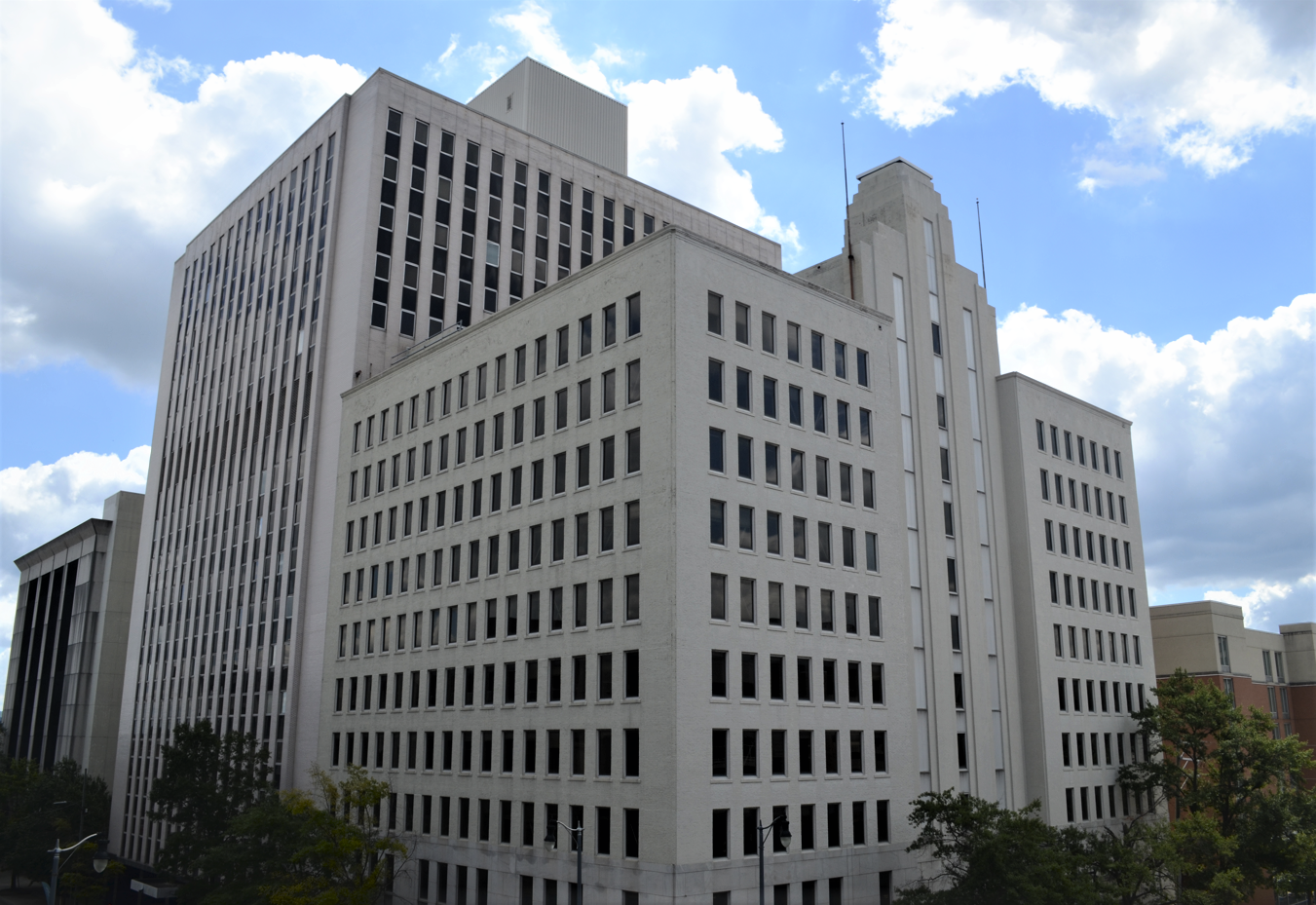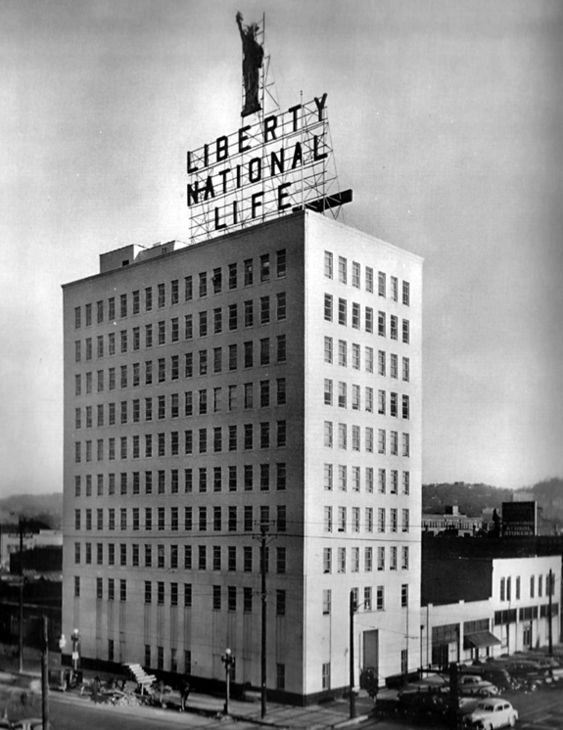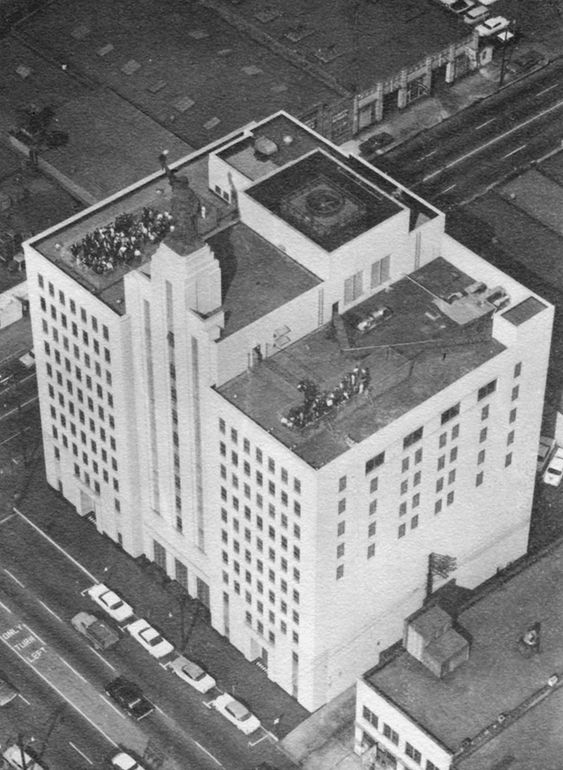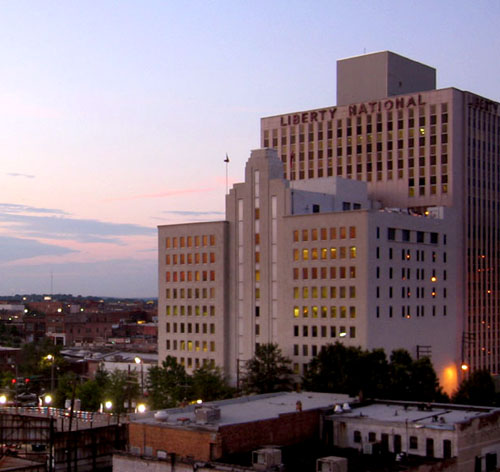
By David Fleming
REV Birmingham President & CEO
The preservation of our urban treasures is a civic mission that requires a commitment from both the public and private sectors. This responsibility extends beyond developers or the city; it encompasses all of us who cherish Birmingham’s authentic character, its heritage, and its stories. Through intentional collaboration, we stand ready to converge whenever opportunities arise.
The current buzz surrounding the sale of the Liberty National Building marks a pivotal juncture. This building has stood anchoring the southern half of 20th Street in downtown for almost 100 years. While it has been vacant for several years, this building tells so many stories about Birmingham. It highlights its business story, the story of civic philanthropy, and the story of the city’s physical growth in the city center and suburbs.
The building we know now was constructed in phases. The original 10-story structure was developed in 1925 and designed by noted local architecture firm Warren, Knight & Davis. Life insurance company Liberty National purchased the building in 1931 for its headquarters offices. As the company grew, a six-story addition was built in 1952. Some of us will recall a 1/5th-scale bronze replica of the Statue of Liberty that was placed on top of the older building. Liberty National even provided tours to see the structure up close. Later in 1971, a 16-story modern addition to the lower building was completed, overshadowing the original structure.



(Images from BhamWiki)
Liberty National Life Insurance was founded in 1900 and grew to become a major Birmingham business. Many of the executives of Liberty National became leaders in civic philanthropy in Birmingham. The legacy of the Samford and Beeson families has left a permanent mark, gracing Auburn University, Samford University, and the Birmingham Museum of Art, among several others, with their generosity.
Liberty National under Frank Samford, Jr., created the Torchmark Corporation as a holding company with businesses in New York, Texas, and Oklahoma. One of those, StoneGate Realty, partnered with Drummond Company in 1989 to develop Liberty Park in Vestavia Hills, a large retail, residential and office development. This led to the relocation of the Torchmark headquarters out of downtown to the suburbs. The Statue of Liberty replica was then relocated to its current home in Liberty Park and is still visible from I-459 today. Ultimately, Torchmark would leave the Birmingham region for McKinney Texas in 2006. Liberty National left downtown for Hoover and the building has been left untouched for several years.
This story of Liberty National’s business and civic philanthropy reflects a lot about Birmingham’s story. Businesses have been born and nurtured in Birmingham and become attractive businesses. They have created wealth that gives back to our city. However, a recurring trend emerges where numerous businesses, attractive to other companies, fall under new ownership, often reducing or severing their ties to the community. Regrettably, this disconnection has the potential to result in the loss of jobs, philanthropic investments, and the business itself. It continues to be the business story of Birmingham and a challenge for our economic development ecosystem to retain businesses or build businesses that will acquire others to our benefit.
Additionally, the move to the suburbs from downtown not only underscores its own significance but also shines a light on similar decisions by businesses that have been made over the course of years. For those of us that champion a vibrant downtown, it reminds us of the need to keep downtown an attractive place for jobs and businesses. Downtown has birthed countless businesses over the years and continues that even today. We need to retain those businesses downtown, contributing to the vibrancy of our great city.
Besides economic growth, preserving this building is essential to our authentic character. The Liberty National Building represents the opportunity to keep an almost 100-year-old part of our urban fabric in our lives. Such a building is a challenge to redevelop. But it is not impossible. With the will and commitment to do that it can be done. Imagine a hole in the physical fabric of the southside with the building gone. It is a building that has a place in the skyline, and it should remain so. This will require the right combination of a realistic seller, a skilled redeveloper and city and state incentives. Many buildings like the Liberty National have been great mixed-use conversions. A hotel and residential mix is a great option for this landmark. The return on the investment in Liberty National’s adaptive re-use strengthens our economy, our heritage, and our authenticity. All of those things are of lasting value.
Related News
-
Why we say yay to two-way streets
Filed Under: Developer, Downtown Birmingham, Filling Vacant Spaces, Front Page, Transportation, Yaysayers
REV Birmingham is a long-time advocate for making the switch to two-way streets downtown, and this is something recommended by planners studying our downtown for years. In fact, the team that developed the 2004 City Center Master Plan recommended many street changes but noted 4th Avenue North conversion should take place “immediately.” We believe this project is a catalytic moment for Birmingham – but you may find yourself wondering why that is.
-
The Key Tool for Urban Revitalization: Downtown BHM's Business Improvement District
Filed Under: Business-Proving, Developer, Downtown Birmingham, Front Page, Get Involved, Potential-Proving, Why BHM
By the time REV took on BID management in 2018, downtown had a new set of needs from its BID. Downtown Birmingham in the ‘90s had a population mainly of 9 to 5 employees. But the downtown of 2018 had a whole new population of residents and visitors throughout the day and night. We had new opportunities to create positive experiences, inviting them into more downtown businesses and public spaces, and to keep them coming back for more.
-
Introducing the six businesses that call Nextec home
Filed Under: Business-Proving, Developer, Downtown Birmingham, Filling Vacant Spaces, Front Page, Historic Preservation, Potential-Proving, Why BHM
On the corner of 3rd Avenue and 16th Street North, you’ll find Nextec, a redevelopment of the 90-year-old, 65,000-square-foot Edwards Motor Company building (also formerly known as the Sticks ‘N’ Stuff building). With experience in historic renovation, developer Michael Mouron, chairman of Capstone Real Estate Investments, began this civic project in 2021 as a space for business startups to continue their work in the Magic City – a function encouraged by REV Birmingham.